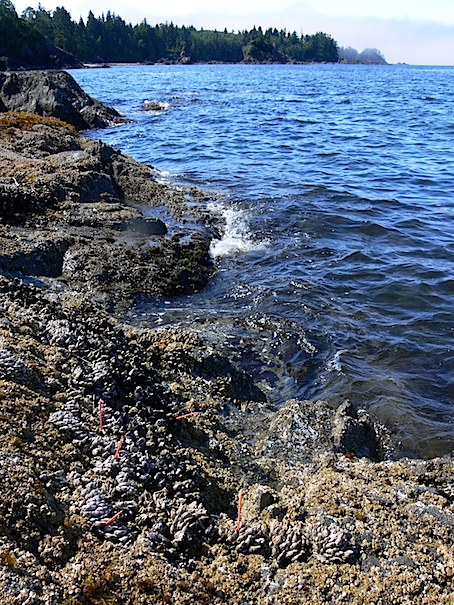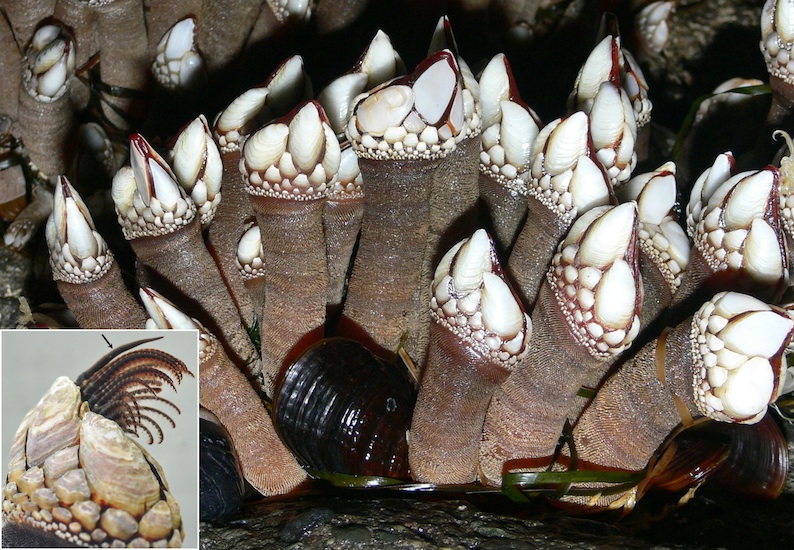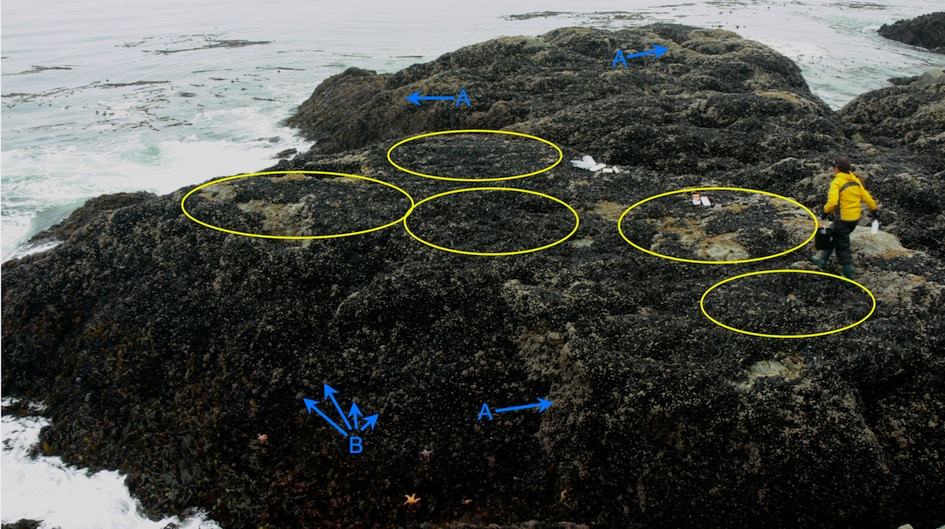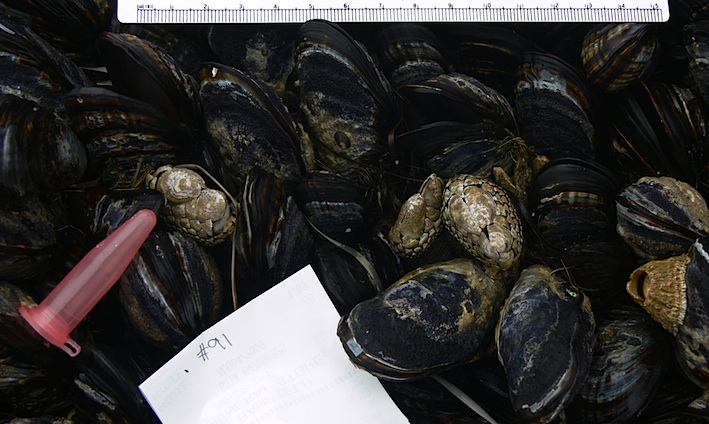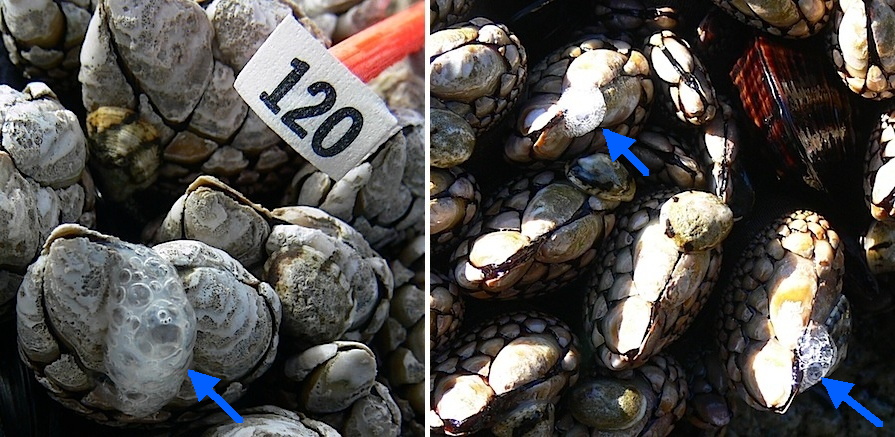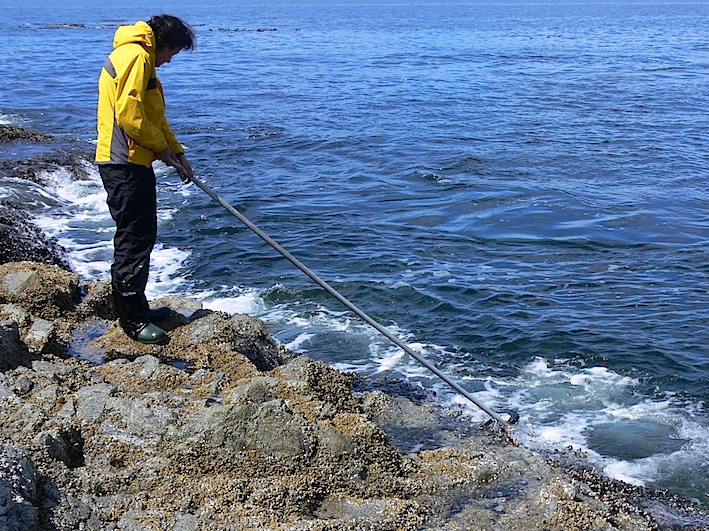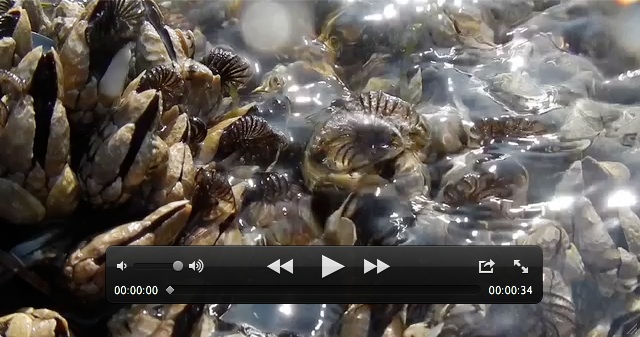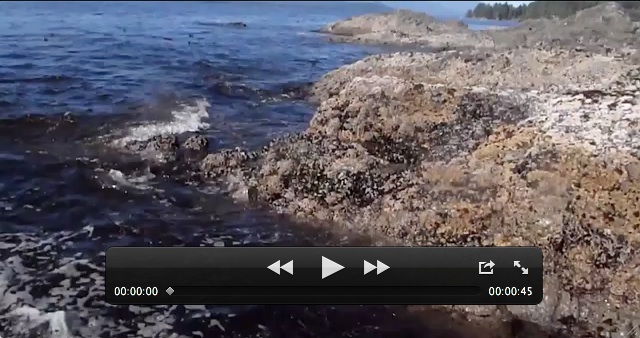| THE PUZZLE: How do barnacles too far away from a mate to copulate end up with fertilized eggs? Barnacles, which are hermaphrodites, were always thought either to copulate with a neighbor using their long penises or (in some species) to self-fertilize if no partner was nearby. But even though some isolated individuals bear developing embryos, the Pacific gooseneck barnacle (Pollicipes polymerus) was thought not to self-fertilize.
A SOLUTION: We used genetic markers to show that there's a third way: spermcast mating (capture of sperm from the water) that may supplement fertilization by traditional means.
|
THE SIGNIFICANCE: No one ever suspected that barnacles (or any crustacean for that matter) were capable of spermcast mating, although it makes a lot of sense for barnacles that are permanently fixed to the bottom. Surprisingly, even individuals with a mate nearby still captured some sperm from the water, so sperm capture is not limited to individuals outside of penis range from a partner.
Fascinating questions arise about how Pollicipes actually capture sperm and whether other barnacles can do so as well. Furthermore, we believe that this is the first evidence of sperm capture in any crustacean, a hugely diverse group that includes crabs, shrimps, lobsters, water fleas, and copepods.
Might any other crustaceans have this ability as well?
|
